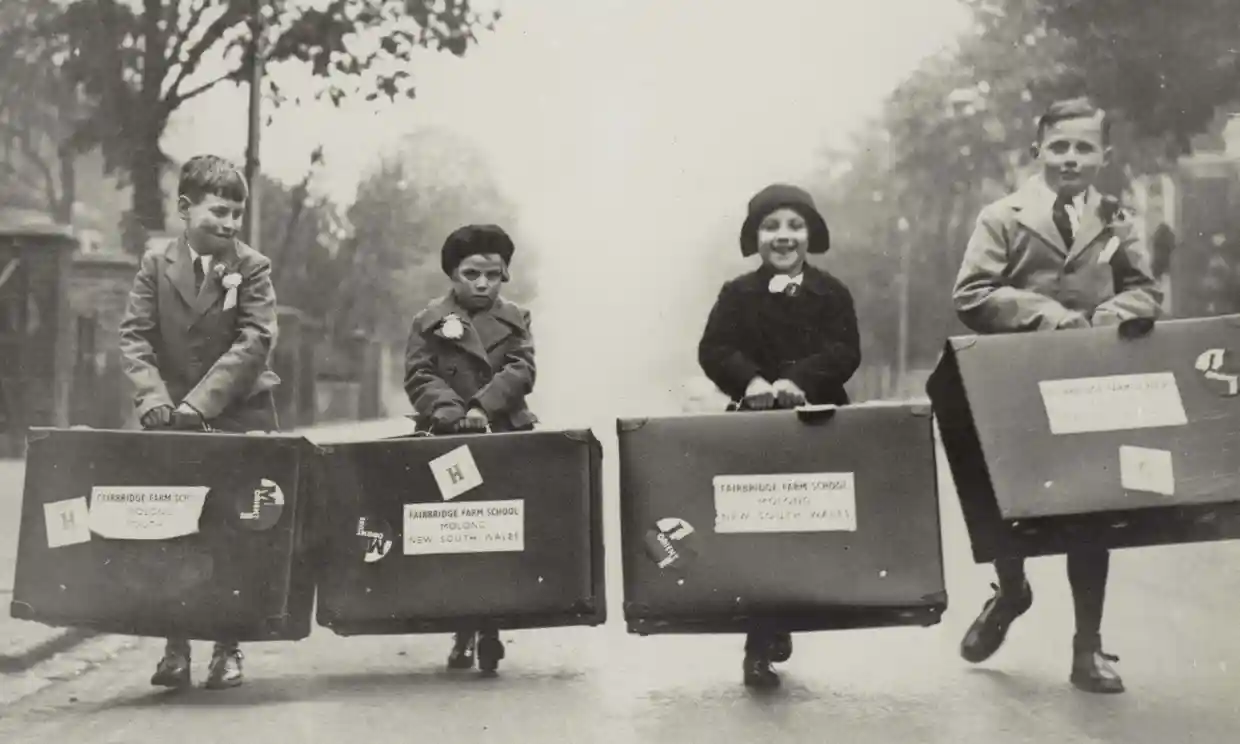It sounded great. Children were rounded up from the streets of Great Britain and send aboard luxury liners to a new life in Australia or Canada. They were told they’d have plenty to eat, see lots of sun and could swim in the ocean as they liked. BUT….
It wasn’t true
The truth was they were being sent into forced servitude, hard labor and abuse. The story is well chronicled in the historical fiction book I’ve just finished. It’s called Beyond the Crushing Waves and was written by Lilly Mirren. Other articles and non-fiction books about this are available as well.
130,000 children
This actually happened between the 1920s and 1970s to more than 130,000 British children who were sent primarily to work on farms. They were sent to their “better life” in former colonies, mainly Australia and Canada.
Some as young as 3
The children, aged between three and 14, were almost invariably from deprived backgrounds and already in some form of social or charitable care. It was believed, they would lead happier lives. Some, however, were turned over by overwhelmed parents, who thought they were doing the right thing.
Subject to physical and sometimes sexual abuse
The children, however, wound up in likely worse conditions than they left. In 2010, then Prime Minister Gordon Brown offered the children and apology. The British government in 2019 offered these children $36,000 in compensation.
British inspection tour
In 1956, British officials went on a fact-finding mission to Australia, inspecting 26 institutions that took in child migrants. They delivered a critical report, noting concerns such as the remote rural locations where some children were sent. Despite this, the program continued. And the report made no mention of the sexual or physical abuse faced by a number of young people.
“Shameful episode”
The letter said: “The government has long acknowledged and accepted that assessment at the time of the national apology in 2010 and in fact went further, calling it a ‘shameful episode of history and this failure in the first duty of a nation, which is to protect its children’.”
Way to increase populations
The government saw this as a way to relieve pressure on British orphanages. It also served to increase populations in the former colonies.
Poor food, other maltreatment
While on the ships heading overseas the children ate well, once they arrived at their destinations, their food was poor, often weevil-ridden and unfit to eat. They had little time off from chores. And this servitude marked them for life.
Children at our border
As I was reading this book, I couldn’t help but think of the migrant children at our border, some of whom have yet to be reunited with their families. Children are a country’s most important future resource. They deserve love and support.


One thought on “English child resettlement — to much abuse”
There were 2 comment places and I sent to the first one. Not sure if it got thru. I remember a movie on Disney channel years ago. It showed a girl who had it much better in the US where she was sent. She didn’t want to go home to the abuse she suffered at home. I guess that was a rare occurance or a fictionalized story.
Comments are closed.